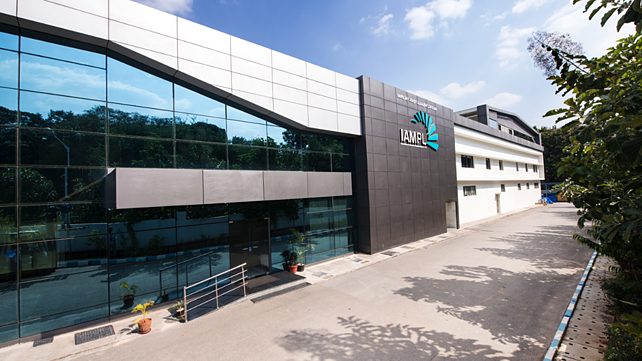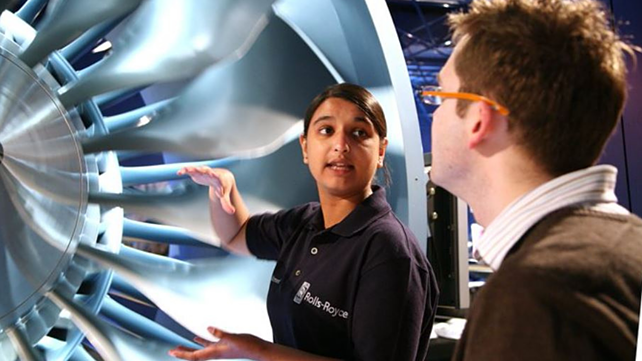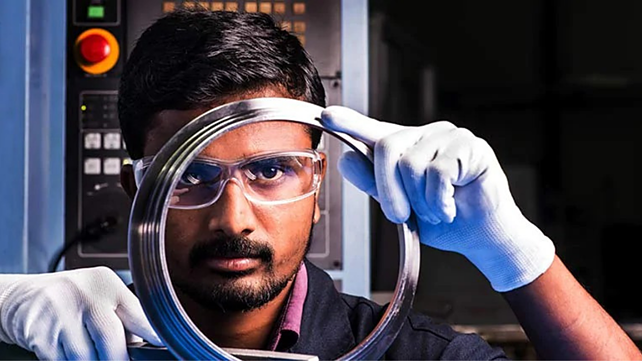
Kishore Jayaraman, President, Rolls-Royce India & South Asia, joined Rolls-Royce in 2012 at a time, when the company was transitioning from licensed production to engineering services and component manufacturing. Prior to joining Rolls-Royce, he enjoyed his 23 year stint at General Electric (GE). Under his leadership, over the last decade, Rolls-Royce India has expanded its engineering, digital, supply chain and manufacturing footprint in India, to become an important pillar of the engineering giant’s global operations.
-----------------------
Could you give us a broad overview on the activities taking place at Rolls-Royce India?
Rolls-Royce is present in three businesses – civil aerospace, defence and power systems. We have been present in India since the 1930s, and since then have been part of the Indian Air Force (IAF), Indian Navy (IN) and in commercial aviation. In 1956, we set-up a technology transfer agreement with Hindustan Aeronautics Limited (HAL) and since then we have been selling in India and participating in Indian requirements with HAL.
Around 2005, we saw the need to further leverage our capability and the capacity in India. We started initially with outsourcing of engineering services, and this quickly started picking up momentum and around 2010, we decided to form a Joint Venture (JV) for manufacturing in India, known International Aerospace Manufacturing (IAMPL). This has ended up being one of our very successful JVs.

Since 2012, which is the time I joined Rolls-Royce, we've been ramping up our activities in India. We have moved from outsourcing of engineering services to capability building within our own teams, building our engineering portfolio and growing our IAMPL JV. We did go through lots of trials and tribulations during the process but immediately after that, R2 Data Labs, the digital team was built out of India.
We have started building on our business services teams and have formed a second JV for power systems, in Pune, following which we grew our engineering teams in the same city. We are today, a fully operating business here in India and are looking at how we can do more in terms of co-creating products in India and serving global requirements. Our Pune JV is going to be exporting more and more.
India is not short of capacity in terms of people or capability, it is just bringing the capacity and capability together for the benefits of individual companies, where the intersection was always very small. But that intersection has kept on growing and today, we are at a point where I believe we will probably co create products and services with India into the future.
Could you provide an insight into the work being done at Rolls-Royce Centres of Excellence in India?
Some of the work done are mundane, like CAD drawings, technical manuals, etc. We have a model where we have partners like Infosys, TCS and many others for the work that can be outsourced. For work that cannot be outsourced, because of our own requirements related to export controls, data privacy, IP, or other reasons, we take up this work with our own engineers. Work on many products has taken place in Bengaluru, especially for civil aerospace programmes and is also done with total coordination between our centres in Derby (UK) and Dahlewitz (Germany).

We are working closely with our other centres on defence engineering, as here, there are more stringent rules around what can go back and forth between nations. So, we make sure we adhere to all the rules and laws from all the different nations. We do a lot of work at the component level, but can also go up to system level. It is the same thing with our Power Systems Centre in Pune.
So, in terms of Centres of Excellence, it's not like we have only one product that we look at; we look at all the products and different levels of the maturity in each of the products. We also have service centres to do all local services.
Our Digital Centre in Bangalore does a lot of analysis on all the data globally on services, and we're able to deliver cost savings to the company. The data analytics work that is being done in Bengaluru is about creating the algorithms, it’s about sifting the data and really doing more and more intelligent high-end work, where the algorithms themselves have to be created. There are also deep learning techniques, machine learning techniques, and we are trying to put Artificial Intelligence (AI) on top of it. What started off as a capacity curve for us has now grown tremendously in a capability curve.

We are participating with our Trent XWB turbofan engines, which are the most recent Rolls Royce engines, powering the Airbus A350. A lot of people in our Bengaluru centre were completely involved during design of the engine components, pre-testing, and initial test phases. Similarly, Trent 1000 is another engine, where we have done a lot of data analytics work and we continue to do all this work with our team in Bengaluru.
Can you elaborate on your supplier partnerships in India?
In terms of engineering services, we are partnered with Infosys, TCS and many others. For manufacturing components, we have our own major supplier in IAMPL, along with Godrej, Bharat Forge, Tata Advanced Systems Limited (TASL), Tata Advanced Materials Limited (TAML) and others. The thing about the manufacturing supply chain for aerospace components is that it’s a very long process and our expectation from our suppliers is not to have any defects. So, the approval process is very rigorous and time consuming. But at the end of the day, when it is done, then the work continues with them for a very long time.
We continue to look for opportunities everywhere for all three businesses, whether it’s our defence business or power systems or aerospace. HAL is a very unique company for us because it is not only our customer but also our supplier and our JV partner. We have had a long partnership with them, going as far back as 1956. We have had a very successful journey in our partnership with the Tata group, Godrej, Bharat Forge and continue to grow. So, I think the partnership model that we do with most of our suppliers is working very well and we are all very closely integrated in this whole journey of creating components.

Could you please elaborate on the availability of the right talent and skilled manpower?
Let me give you an example, for a requirement that we had for 500 engineers, we had approximately 86,000 applicants. We had to invent a new method to interview people, and we did this over video interviews initially, trimming it down to 5,000 candidates, which was then further brought down to 1,000, with whom we finally did face-to-face interviews. All this was accomplished within 18 months, and we hired all these people and trained them to deliver to global standards.
If you look at manufacturing, we hired people at our IAMPL JV, who were mostly engineers, some of them even had PhDs. One particular individual, who we sent for a training and apprenticeship programme, topped the course, and finished it within three months. This was something that had never happened before. So, I think India has got the talent; it is just that the match has to happen of the talent to the job. The company has to probably hold hands of people for a little bit initially, but I honestly feel that talent has never been the issue. Making sure that the talent delivers to the company is the responsibility of the leaders of the company.
For any operation to be successful, what is also extremely important, is the ‘Say to Do’ ratio. In my view, we have to say what we will do and do what we say. If the ‘Say to Do’ ratio holds, I think businesses can continue to grow in India. Yes, in our case the talent that we hired was great, but we also had to make sure that they fit within our culture and understood what needed to be done for the company and then deliver on it. This journey has been a rewarding and learning experience for us.